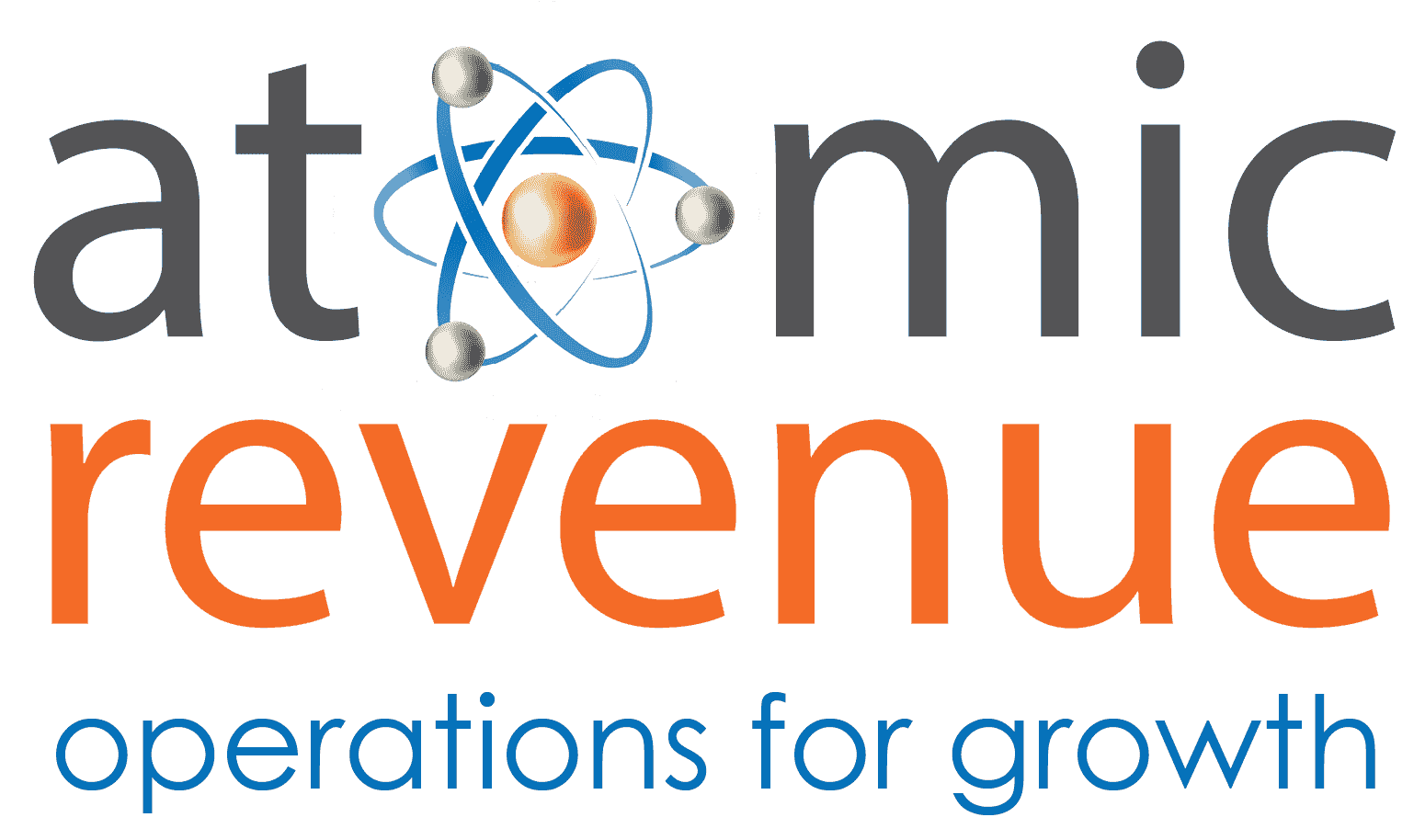.png?width=1024&height=512&name=Atomic%20Revenue%20Blog%20Headers%20and%20Graphics%20(12).png)
Do your sales reps do their own thing? Are you able to develop goals, measure results, and adjust expectations and actions based on data or is it a free-for-all? According to recent studies, only 33% of sales reps’ time is spent actively selling1, and 40% of their time is looking for someone to call2. Add to that the fact that up to 70% of the B2B buyer’s journey is complete before a sales rep is ever involved in the process. It’s no wonder companies are struggling to increase revenue.
Does this sound familiar? If so, it may be time to turn your sales reps into a modern sales team and increase revenue by operating in a digital environment with a dynamic data-driven strategy and meaningful KPIs.
Let’s look at where useful data comes from and six important KPIs that will ensure you’re getting the most from your sales performance data and sales team.
Sales KPIs
- The Close Rate by Key Factors
- Lead Conversion Rate by Individual Markers
- Customer Acquisition Costs & Additional CAC Metrics
- Customer Lifetime Value (CTV) & Customer Retention Rate
- Average Sales Cycle Length & Individual Sales
- Net Promoter Score
Where Does the Data Come From?
There is data everywhere, in every action your internal and external salespeople take, and in every part of the buyer journey. For example, how many times does your team interact with a prospect or customer to get them to buy? How long does each sales call take? How long is the delivery process? What is the average order size? How often does your sales team upsell or sell an additional product with the original request? How many sales are automated through your website? Is there a seasonal trend? You get the idea.
This information can be captured, measured, and analyzed as key performance indicators (KPIs) to help focus activity in the areas where it is most impactful and help identify potential new customers and revenue streams. KPIs can also show what is not working so you can eliminate actions and goals that are not productive.
Once you enter and collect all your lead gen, sales conversion, and customer data into your CRM, then you can start to evaluate the following KPIs.
-png.png)
1. Close Rate (or Ratio) by Key Factors
This is a classic, easy-to-measure KPI for any sales department: (Number of Quotes sent to Qualified Prospects/Prospects who converted) x 100 = Close Rate. But stopping at this aggregate view won’t give you actionable insights, it simply shows how successful the team is overall.
Take it one step further by looking at Close Rate by key factors such as sales rep, industry, and source to provide insight into the top and bottom performers. This information can help you identify potential areas for focus or improvement.
For example, if salesperson A has a close rate 3x higher than any other salesperson, could you work to identify which methods salesperson A is using in order to train the rest of the team? Conversely, if you can see that you always seem to close deals sourced through a particular channel, is it worth the time and financial resources spent on developing that channel? Or perhaps adjusting the methodology used for that channel could change the rate of close.
2. Lead Conversion Rate by Individual Markers
Sales and marketing KPIs are deeply linked, and the conversion of leads into the sales funnel is the major crossover point: (# of Sales/# of Leads) X 100 = Lead Conversion Rate. Similar to other metrics, it’s important to not only focus on your lead conversion rate as an aggregate of all activity but to also look at individual markers within.
Conversion rate by source, date activated, or even product can tell you a lot about the success rate of different marketing activities, helping to hone activities that are most successful and watch the impact of modifications to less successful channels.
Diving deep into the marketing funnel to view the lead acquisition date to conversion data based on various sources can also identify unforeseen seasonality in your lead acquisition cycle.
.png?width=1024&height=512&name=Atomic%20Revenue%20Blog%20Headers%20and%20Graphics%20(11).png)
3. Customer Acquisition Cost (CAC) & Additional CAC Metrics
As the name suggests, customer acquisition cost (CAC) is a metric that represents the cost of converting a prospect or convincing a potential customer to become an actual customer: (Cost of Sales + Cost of Marketing / # of New Customers Acquired = Customer Acquisition Cost.
Lowering your CAC means that your business is spending money more efficiently and should see higher returns in its total profit. If you’re unsatisfied with your current CAC but aren’t sure how to drive it down, start by looking at additional metrics such as Cost of Lead Acquisition by Source, Lead-to-Marketing Qualified Lead Ratio, and Time to Close by Source/Market Segment/Product Type.
4. Customer Lifetime Value
There are KPIs that are useful to teams in addition to sales, such as marketing and customer success. One of these is Customer Lifetime Value (CLV) which is used to calculate the total amount of revenue that your business can expect from a single customer account: Average Value of a Purchase X # of Yearly Purchases X Average Length of Customer Relationships = Customer Lifetime Value.
By comparing Customer Lifetime Value to Customer Acquisition Cost, you can determine if the customers you’re acquiring will ultimately contribute more revenue than they cost. And, like the other KPIs we’ve discussed, you can further analyze CLV/CAC by looking at additional metrics such as channel/campaign type, segment size/geography, etc. to unlock deeper profitability insights.
Customer Retention Rate, a sister measurement to CLV, tracks how well you retain your customer base. Are your customers signing one contract and never returning, or are they re-engaging or expanding what they do with you over several contract cycles? A high retention rate can help increase your customer lifetime value.
If you’re looking to increase Customer Lifetime Value, it’s smart to start by increasing your Customer Retention Rate. Customer Retention Rate can be measured by any number of factors – total contracts issued, consecutive days as a customer, etc. – but it’s important to look at these KPIs alongside your CLV data.
.png?width=1024&height=512&name=Atomic%20Revenue%20Blog%20Headers%20and%20Graphics%20(10).png)
5. Average Sales Cycle Length & Individual Sales
In addition to measuring the effectiveness of your sales strategy, tracking this KPI helps you introduce predictability into your sales forecasting: Total # of Days for All Sales Combined / # of Deals Won = # of Days for Average Sales Cycle Length.
You can also use this KPI to assist with individual sales. For example, if a deal is far behind your company’s Average Sales Cycle Length, you can assign a sales rep to follow up on that lead and extend offers such as a free trial or special discounts.
Suppose you’d like to monitor changes in the Average Sales Cycle month-over-month, week-over-week, or even day-over-day but don’t have time to keep crunching the numbers. In that case, a digital tool such as a KPI Dashboard can automate sales cycle calculations and let you view your most important metrics at a glance.
6. Net Promoter Score
Where you use lead scoring to measure the interactions and likelihood of purchase from your leads, you can also measure Net Promoter Score to indicate satisfaction of your existing customer base and the likelihood they will recommend you to others. It’s a great way to get a quick understanding of the sentiment of your customer base.
While typically thought of in a customer success/experience context, the Net Promoter Score is incredibly useful for sales teams. By regularly (every 3–6 months) surveying your customers to ask, “How likely is it that you would recommend our company/product to a friend or colleague?” you can determine who is a Promoter (9–10 score), a Passive (7–8 score), or a Detractor (0–6 score). % of Promoters – # of Promoters = Overall Net Promoter Score.
.png?width=1024&height=512&name=Atomic%20Revenue%20Blog%20Headers%20and%20Graphics%20(9).png)
Using Good Data Develops a Modern Sales Team & Helps Increases Revenue with Customer Advocacy
Using good, useful data modernizes your B2B company’s internal and external sales teams and helps them close more deals to consistently increase revenue with predictability. It also lowers your customer acquisition cost (CAC) and raises the CLV of each customer. By tracking the right KPIs and adjusting strategies to make the buyer journey the best it can be, from initial contact to delivery and follow-up, your team can create repeat customers who sing your praises to others and send referrals who do the same, creating customer advocacy.
Customer advocacy is the secret to steady growth rather than constantly trying to acquire new, high-cost, possibly unqualified leads. Without meaningful, dynamic data and KPIs, widespread customer advocacy is much harder to obtain, if not impossible. Starting a data-driven sales program will empower your sales team, ignite their enthusiasm, delight customers, and impact profitability.
Atomic Revenue Helps B2B Companies Create Data-driven Solutions
Hopefully, sharing these six essential sales team KPIs has given you some inspiration and ideas as to how you can optimize your existing sales process to produce more revenue. Not sure where to begin? Atomic Revenue helps B2B companies like yours create data-driven sales and revenue operations solutions that take the uncertainty out of the equation and help drive profitability. Meet with one of our subject matter experts for a no-obligation conversation today.
Resources: 1. CSO Insights, 2. Inside Sales
 About the Author
About the Author
Liz Campbell, Chief Data Advisor at Atomic Revenue, is dedicated to developing technologies that make business data more accessible and understandable. Liz helps companies align their internal systems to make sure they're capturing the right data for their unique business needs, and then automates the reporting process to ensure each business has insight into the data and analysis they need to truly understand their revenue generation process.




